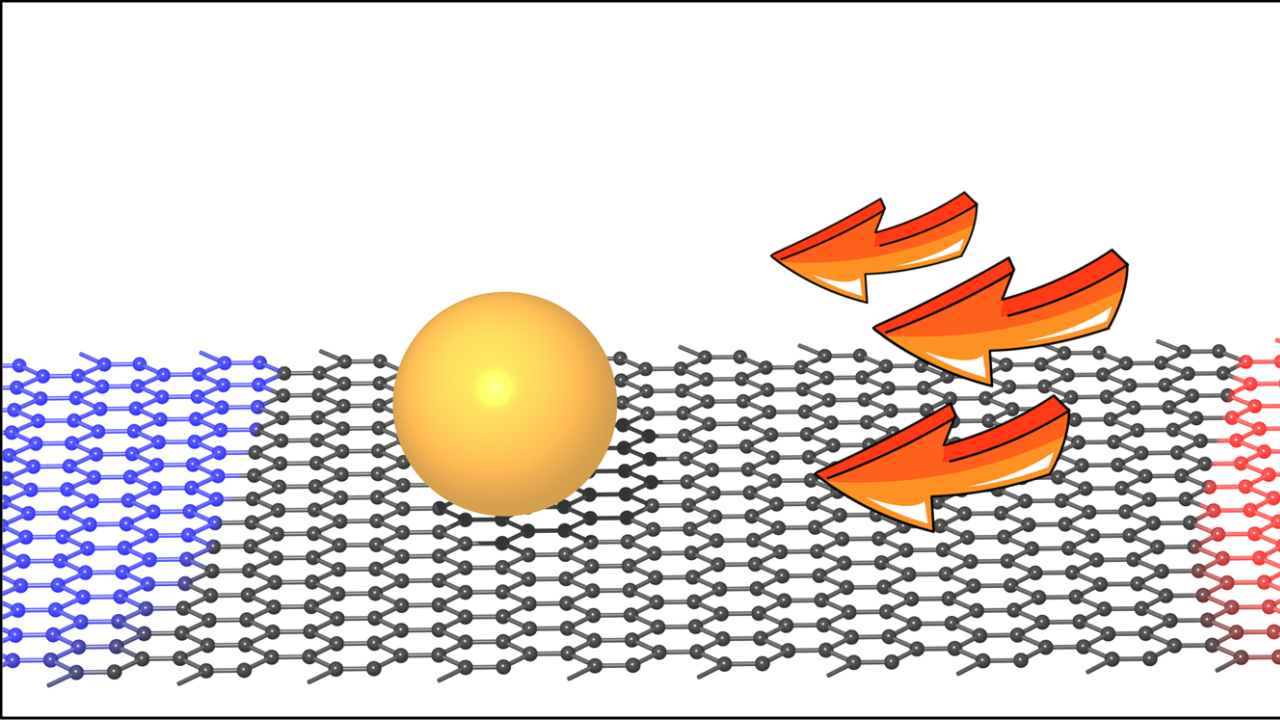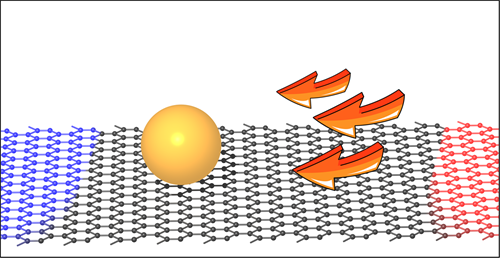
A single gold nano-cluster deposited on graphene can be moved by a simple temperature difference applied at the edges: a new study sheds light on the physical mechanisms driving this phenomenon.
Down at the atom-size regime, the world exhibits some unique and extraordinary physical, chemical, mechanical, and optical properties. A deep understanding and the full control of matter at the nanoscale can help to improve many technology and industry sectors: from medicine to energy, from food safety to environmental science, computing and catalysis. In particular, nanoscale transport and manipulation are crucial aspects for a whole new generation of technological devices.
In this context, a joint team of researchers based at ICTP and SISSA have studied how to move a gold nano-cluster on top of a suspended graphene membrane, with no need to touch it. Emanuele Panizon, Roberto Guerra and Erio Tosatti, coordinator of the study, have investigated the physical mechanisms driving the process and they have published their most recent findings in the Proceedings of the National Academy of Sciences (US).
| Credits: Anna Lombardi |
“You won’t need a “nano-arm” to move the nanoparticle,” the scientists say. A simple temperature difference applied between the two ends of the membrane enabled researchers to observe the gold particle, made up of hundreds of atoms, drifting from the hotter to the colder region.
The fact that temperature gradients in a fluid impart on a body a force able to displace it, technically referred to as thermophoresis, has been known for centuries. The case of interest here is not a body in a fluid, but a molecule, or small particle, on the surface of an interesting solid, for example a two-dimensional membrane such as graphene. "In that system, numerical simulations have indicated that such a thermally induced spatial drift works. Yet, nobody so far tried to completely understand the physics behind this process at the nanoscale and this was exactly the aim of our study,” the scientists explain.
Through numerical simulations, researchers from ICTP and SISSA have shown that the thermophoretic force is not proportional to the temperature gradient, but rather to the temperature difference, independent of distance. This is called a ballistic force and it remains constant up to and beyond a 100-nanometer sheet length. Moreover, it is found that the vertical thermal oscillations of the graphene membrane, moving from hot to cold, provide a push to the object lying on top. These vertical waves, known as flexural phonons, push the nano-cluster in the same way a surfboard is taken to shore by ocean waves.
“When this project started we were not expecting to be able to observe such a variety of phenomena, it was a purely theoretical study. Our results, though, can now open the way to future experiments, as a distance-independent mechanical force could well possess practical applications,” they conclude. “Our results could be of great interest in the frame of manipulating materials at the nanoscale, leading to future technological applications.”
---- Anna Lombardi (ICTP) and Donato Ramani (SISSA)

















